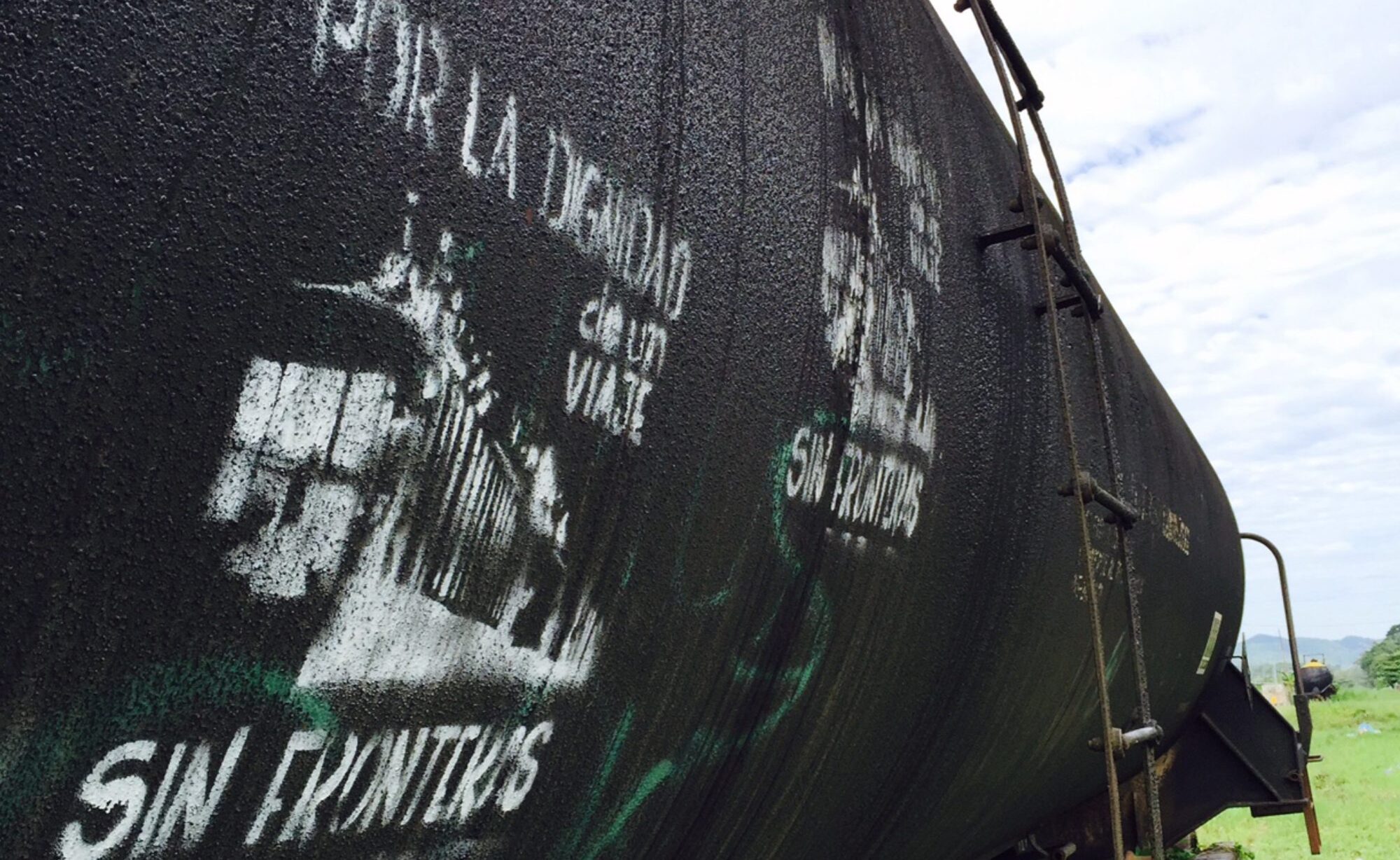The U.S. Border Patrol agent was positioned behind a rust-colored vehicle barrier, on the other side of the international boundary line. He stopped when he saw me, bent down and taking a picture of grass. I was examining a tuft of sacaton, one of the several varieties of native grasses brought back to life by one of the largest ecological restoration projects on the U.S.-Mexico border, at the San Bernardino Ranch, located about 12 miles east of Agua Prieta/Douglas.
Juan Manuel Perez, dressed in jeans and a white cowboy hat, wasn’t fazed. Perez, who is originally from Chihuahua, is the foreman of the organization Cuenca Los Ojos (CLO) and in charge of 45,000 acres of restoration projects spread throughout the region. We walked away from the vehicle and into a nearby wash, called Silver Creek, where Perez showed me what was at the heart of Cuenca Los Ojos (which means “watershed of springs” in English) restoration on San Bernardino: an ancient technique of strategically piling rocks to slow down the flow of water across land. After years of mechanized farming, cattle production, and now drought, this once parched and barren landscape could begin to drink again—could again absorb this precious water.
Since the 1990s, the restoration project has embedded galvanized wire cages, called gabions, on the banks and beds of washes. These gabions are filled to the brim with rocks and go as far as 18 feet deep into the ground. At first glance, they have the striking appearance of an intricate stone wall, a contrast to the border barrier just 100 yards away. But instead of keeping people out, they were built to be sponges shaped to the contour of the streambed and riverbank, slowing the water and replenishing the soil with life. Before they were built, rushing water from monsoon storms would take topsoil and leave cutting erosion. Now, there is water year-round.
Perez gestured to the reviving landscape around him, to the 7,000 acres we could not see. It was not only what was on the surface—the native grasses and sprouting desert willows and cottonwoods—that was so remarkable. It was also what was below: a water table that had risen 30 feet in the middle of a brutal 15-year drought that everywhere else was sucking the land dry. All throughout the borderlands and Arizona, after years of hotter weather and less precipitation, the grass had withered, the earth had cracked, and the animals had died. Yet, water was recharging even 10 to 15 miles downstream from Rancho San Bernardino into Mexico, to places where people hadn’t seen it for decades. From brown to green, from completely dry to lush: to me, it seemed like a miracle.
As Perez and his CLO colleague David Hodges explained this, the Border Patrol agent backed his F-150 truck into the wash where he continued to keep an eye on us. This suspicion is only the most palpable tension between cross-border ecological restoration and one of the most militarized borders on the face of the earth. When sharing resources or doing measurements, what should be a five-minute walk to your neighbors turned into a 50-mile drive through a distant port of entry.
Both border militarization and ecological restoration are two distinct responses to the most challenging ecological crisis of our time: the changing climate. In this microcosm along a remote area of border, these two contrasting visions might just embody the future struggles of the world. As the Trump administration takes office with promises of hyper-racialized border building, you could say what I saw that day on this ranch was a tale of two walls—one about restoration, and the other about exclusion.
Read the rest here on the Edible Baja Arizona website where it was originally published accompanied by the gorgeous photography of Jeff Smith.
